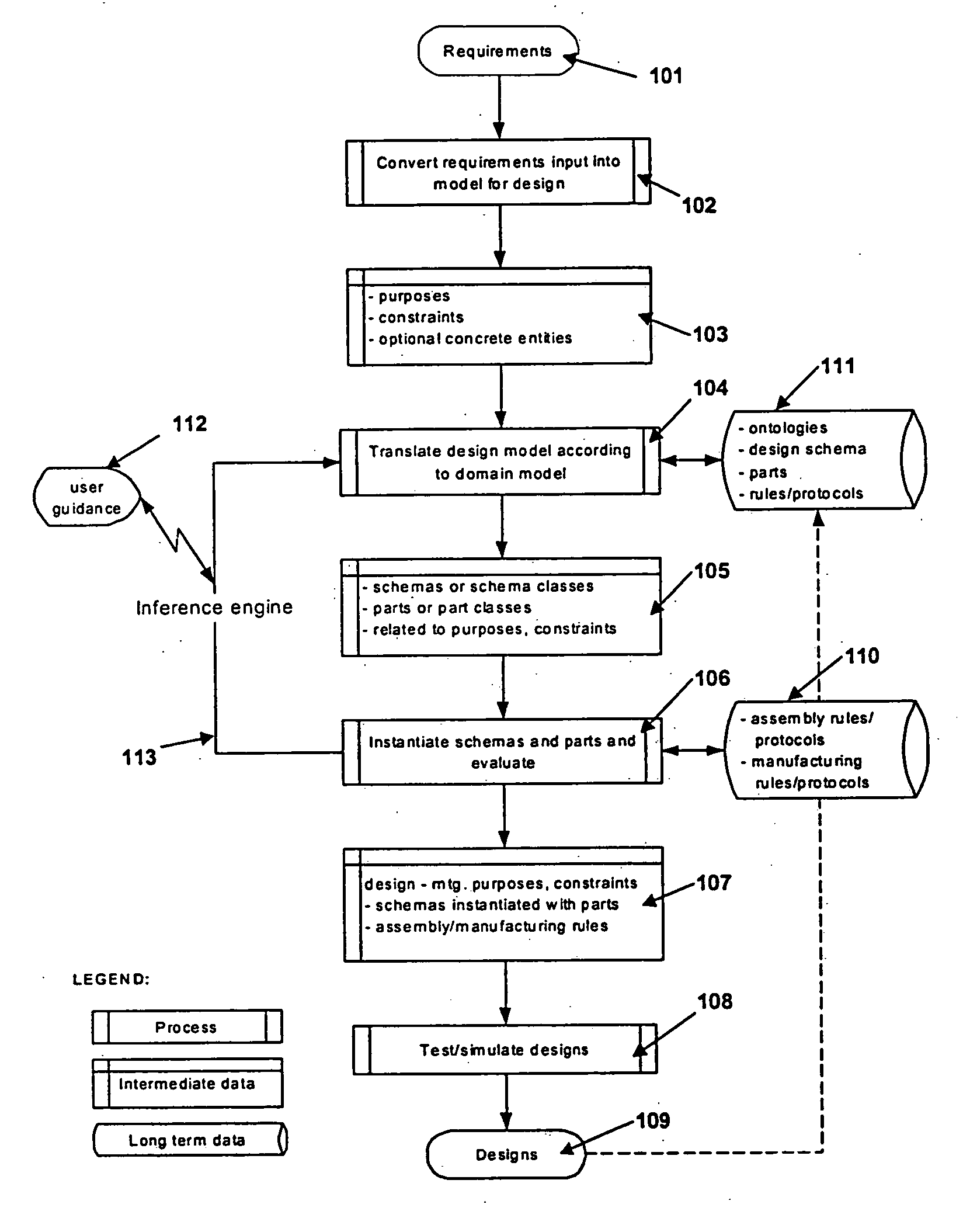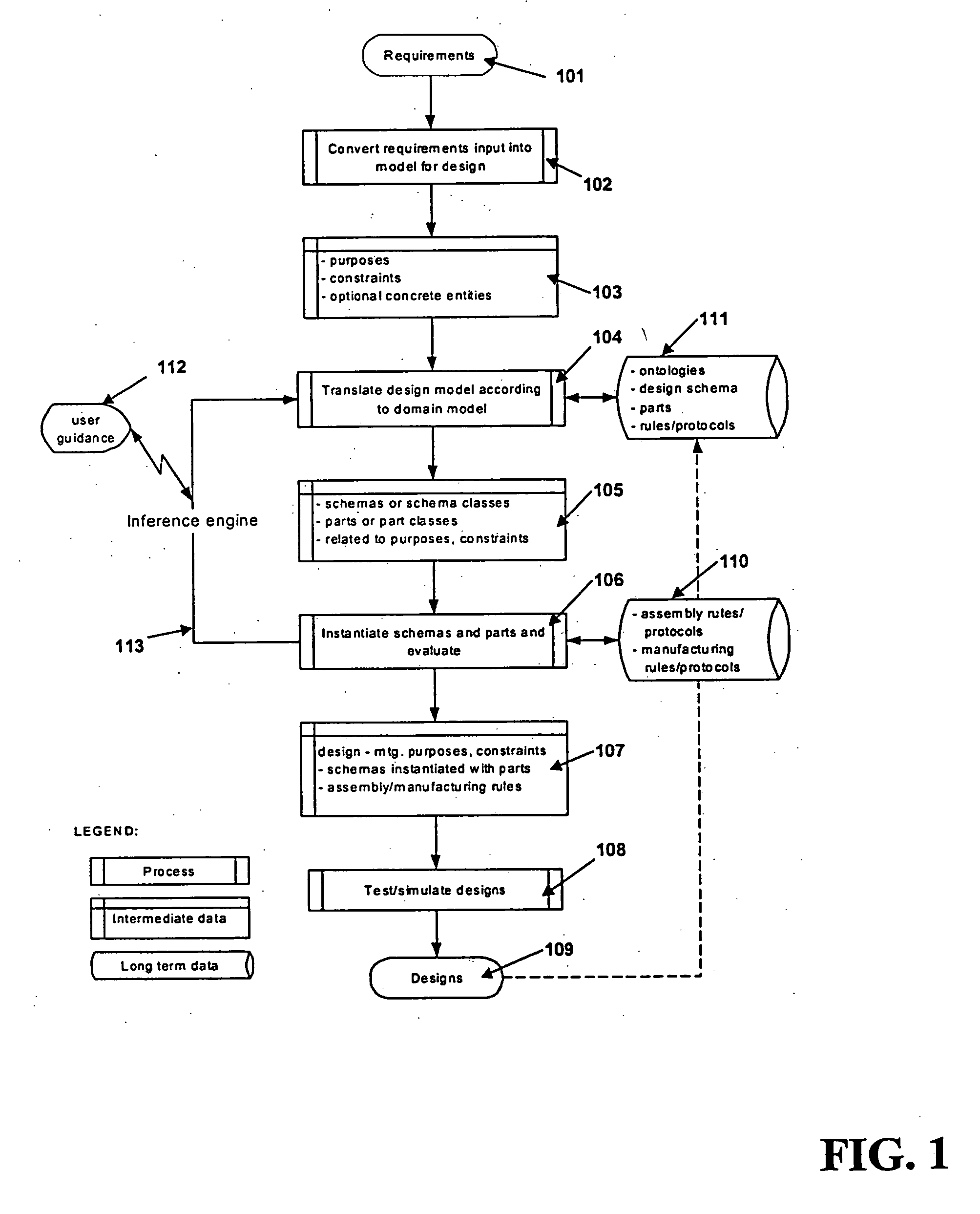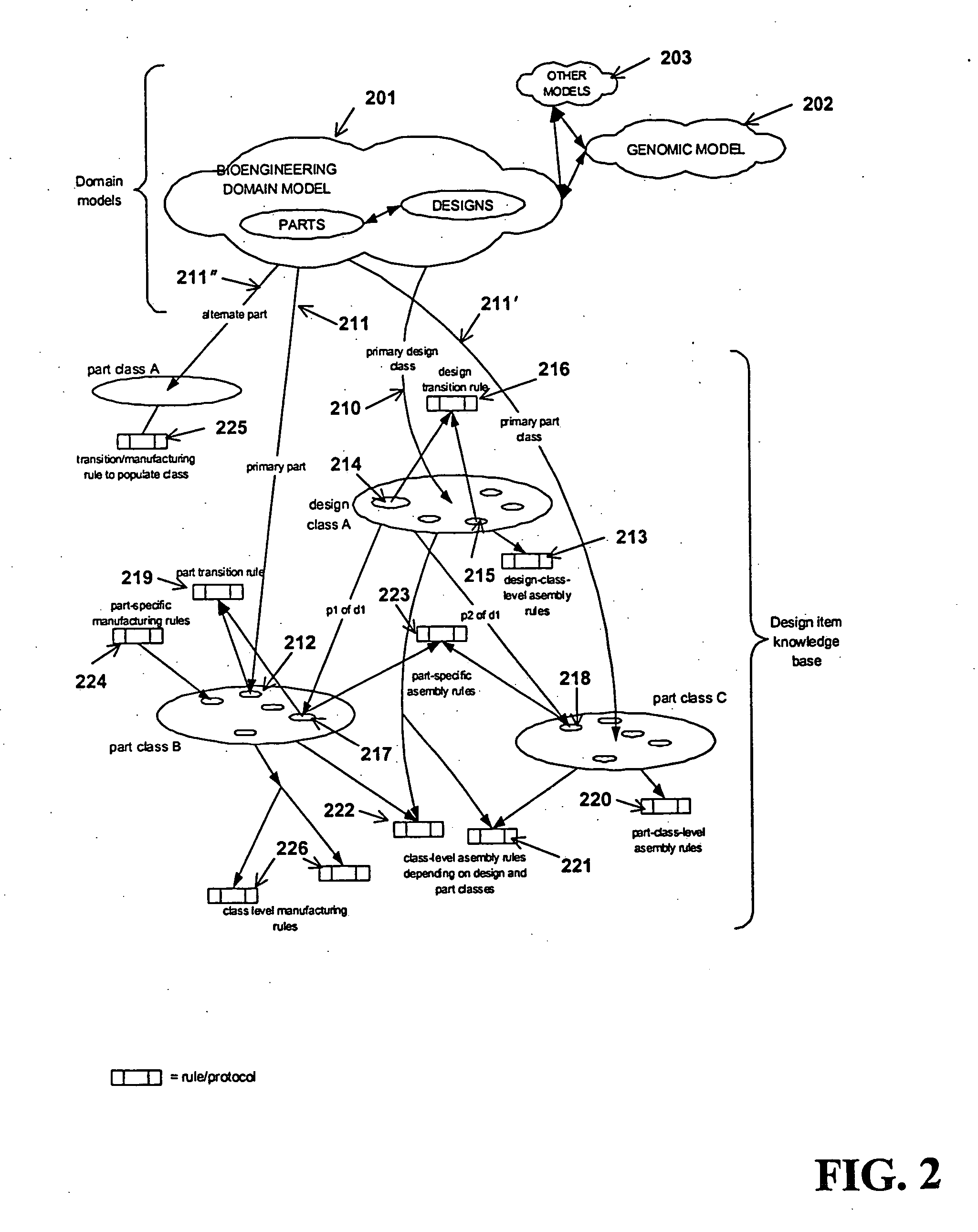Methods and systems for designing machines including biologically-derived parts
a biologically-derived part and machine technology, applied in the field of methods and systems for designing novel molecular scale machines and processes, can solve the problems of inability to design complex microprocessors with millions of gates on a chip, or miniaturized multi-layer printed circuit boards without cad systems, and the computational assistance provided by traditional cad systems to enable engineering is not on a conceptual level appropriate for biological materials, and the interaction between biological subsystems is complex
- Summary
- Abstract
- Description
- Claims
- Application Information
AI Technical Summary
Problems solved by technology
Method used
Image
Examples
example 6.1
[0351] This subsection presents exemplary frame structures for design and part schema. For both schema, the named slots are accompanied by descriptions of their intended contents.
[0352] An exemplary format for a design schema is the following:
[0353] Attribute Contents Name [0354] Design_ID: identifier (id.) for this design case / schema or schema class [0355] Name: text name of schema (e.g.: for display) [0356] Classes: schema classes or schema directly related: “up” from this instance, perhaps into ontology; or “down” from this instance to more specific instance; designated, preferably, by design ids. [0357] Purpose: the purpose for which this design is intended; may be represented informally by, e.g., a description of activities and response to stimuli, or formally by, e.g., a state diagram, or if-then rules, or so forth [0358] Behaviors: other activities and responses known or expected for this schema; may be represented informally or formally; a behavior may be a part of the pur...
example 6.2
[0380] This example provides an abbreviated taxonomy of parts and design schema starting from a generic class of ligand sensors and terminating in concrete instances of biomachine designs with previously confirmed ligand sensing behaviors. [0381] Design_ID: ligand sensor (three part construction) [0382] Classes: (isa—sensor) [0383] Purpose: to detect the existence of a ligand through specific sensitive binding activity [0384] Behaviors: to produce a signal upon ligand binding [0385] Parts / schemas: ligand detector; transducer; linker moiety) [0386] Config: detector coupled to transducer by means of the linker moiety [0387] A. rules:—on ligand binding, the ligand detector produces response to which the transducer is responsive [0388] the detector's response is such that a linker moiety can couple the it to the responsive transducer [0389] the detector and the transducer are of a nature that permits responsive coupling by a linker moiety [0390] coupling by the linker moiety is arranged...
example 6.3
[0488] Numerous examples of fluorophore pairs, with the attribute that they are capable of supporting fluorescent resonance energy transfer (FRET), exist in the literature (found through a pointer to the literature database), including protein and small molecule fluorophores. For each pair, one fluorophore serves as a donor and one fluorophore serves as an acceptor. A key feature of the pair is that the emission spectrum of the donor fluorophore overlaps significantly with the excitation spectrum of the acceptor fluorophore. Thus, energy can be transferred non-radiatively from donor to acceptor, and is then emitted by the acceptor at a wavelength distinguishable from the natural emission from the donor. The efficiency of energy transfer is governed by the distance separating the fluorophores and by their relative orientation. The behavior of this Molecular Clasp includes to decrease the distance between its actuator modules (i.e. fluorophores) in response to ligand binding, thus inc...
PUM
 Login to View More
Login to View More Abstract
Description
Claims
Application Information
 Login to View More
Login to View More - R&D
- Intellectual Property
- Life Sciences
- Materials
- Tech Scout
- Unparalleled Data Quality
- Higher Quality Content
- 60% Fewer Hallucinations
Browse by: Latest US Patents, China's latest patents, Technical Efficacy Thesaurus, Application Domain, Technology Topic, Popular Technical Reports.
© 2025 PatSnap. All rights reserved.Legal|Privacy policy|Modern Slavery Act Transparency Statement|Sitemap|About US| Contact US: help@patsnap.com



